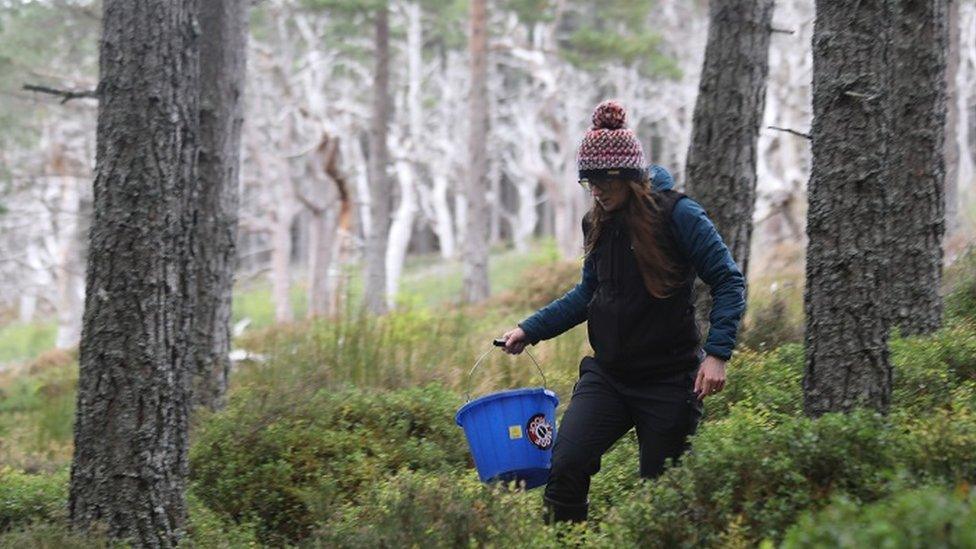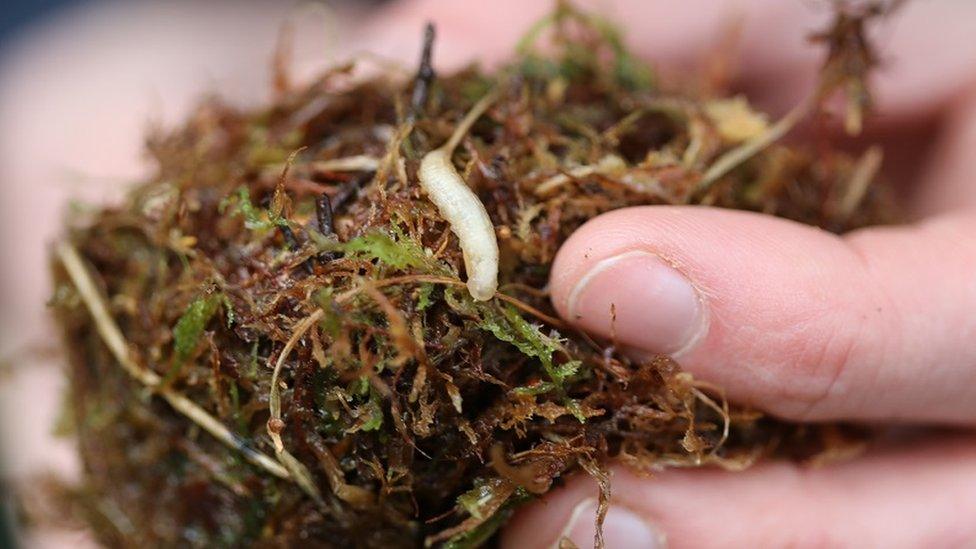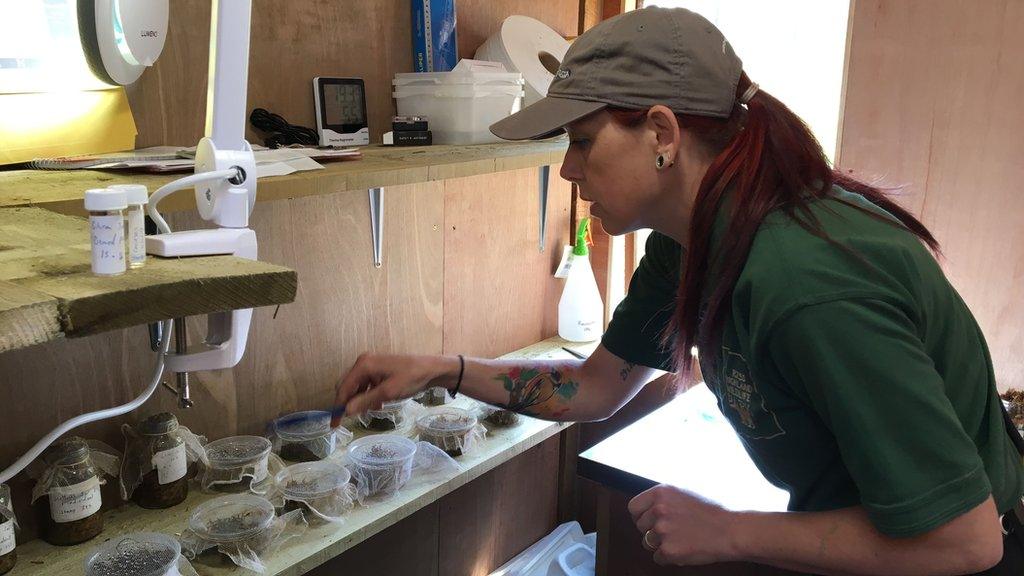Thousands of rare fly larvae released in Cairngorms
- Published

A record number of pine hoverfly larvae has been released into the wild
More than 3,000 captive-bred larvae of an insect on the brink of extinction have been released into the wild.
In Britain, the majority of pine hoverfly are only known to inhabit one small forest in the Cairngorms.
The last sighting of an adult in the wild was made more than eight years ago.
The Highland Wildlife Park has bred the flies since 2016 and this year has raised and released a record number of larvae at three woodland sites.
The breeding programme forms part of the Royal Zoological Society of Scotland (RZSS) and the RSPB-led Rare Invertebrates in the Cairngorms project.
RZSS owns the Highland Wildlife Park at Kincraig near Aviemore.

It has been more than eight years since an adult pine hoverfly was in the wild in Britain

The larvae are raised inside old food jars
In the wild, the larvae live in small holes that have rotted into old pine trees. There, they feed on a "nutritious soup" of bacteria.
To make the soup in captivity, keepers mix pine wood chippings from the flies' natural habitat with rain water.
The temperature of their breeding area has to be regularly checked and damp moss is used to plug the top of the jam jars.

The larvae need a specialist habitat to survive
Dr Helen Taylor, RZSS conservation programme manager, said: "Following habitat loss over the past century, our pine hoverflies are on the brink of extinction, with the majority of the known native population being cared for by our charity's dedicated team at Highland Wildlife Park.
"Like many other insects, pine hoverflies play an important role in maintaining healthy ecosystems, but are sadly often overlooked until it is too late."
- Published14 April 2021

- Published21 May 2019
